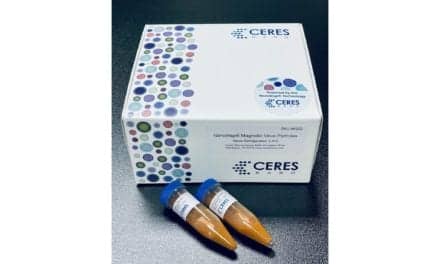UCLA Health researchers find cell-free DNA combined with machine learning can distinguish ALS from other neurological conditions.
A simple blood test measuring cell-free DNA could provide faster and more accurate diagnosis of amyotrophic lateral sclerosis (ALS), according to new research from UCLA Health published in Genome Medicine.
The noninvasive test could allow neurologists to rule out other neurological diseases and detect ALS earlier to provide better treatment and potentially improve life expectancy. The study is among the early research to test cell-free DNA—fragments of DNA released into the blood from dying cells—as a potential ALS biomarker.
ALS, commonly known as Lou Gehrig’s disease, is a rare and currently incurable neurodegenerative disease that causes the loss of motor neurons in the brain and spinal cord. The disease typically begins in patients who are 50-70 years old with life expectancy being only two to five years after initial diagnosis, according to the National Institutes of Health.
“There is an urgent need for a biomarker in ALS to diagnose patients more quickly, support clinical trials and monitor disease progression,” says Dr Christa Caggiano, a postdoctoral fellow at UCLA Health’s neurology department and the study’s lead author, in a release. “Our study presents cell-free DNA, combined with a machine learning model, as a promising candidate to fill this gap.”
DNA Methylation Patterns Provide Disease Signatures
Caggiano and fellow UCLA Health researchers, along with collaborators at the University of Queensland, tested cell-free DNA as an ALS biomarker because it releases from dying cells in different body tissues affected by the disease and have distinct signatures. These signatures are caused by the natural process of DNA methylation, which occurs when a methyl group molecule attaches to DNA and helps regulate expression of genes.
ALS leads to changes both in the amount of cell-free DNA released from degenerating cells as well as patterns of methylation. The researchers tested this method on two groups of ALS patients and healthy participants using computer models to determine if these DNA signals could predict which patients had ALS.
The test was able to significantly discriminate between ALS patients and healthy participants and provided insights into disease severity.
“Our model test could not only distinguish ALS patients from healthy individuals but also from those with other neurological conditions, which is a challenge for current ALS biomarkers,” says Caggiano in a release. “We hope this could lead to faster diagnoses and better predictions of patient outcomes.”
Multi-Tissue Analysis Reveals Broader Disease Impact
An advantage of this test is that it examines cell-free DNA from several tissue types and not just nerve cells. The test was able to pick up signals from dying muscle tissue and inflammation, suggesting that ALS may also affect muscle tissues and immune cells.
While the biomarker test shows promise, Caggiano says larger studies with more diverse participants and testing methods are needed before it can be relied on in clinical settings. UCLA Health is currently conducting a larger trial in conjunction with other research institutions to validate this biomarker test.
The study was co-led by Dr Noah Zaitlen of UCLA Health and Dr Fleur Garton at the University of Queensland.
ID 45554010 | Als © Zerbor | Dreamstime.com





